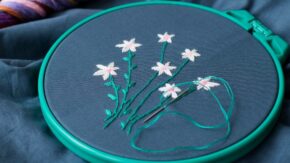Metal craft is the skilled practice of working with different metals, like iron, steel, aluminum, or copper, to create decorative objects or functional materials for building through processes like forging, welding, casting, and shaping.
Metal crafts encompass a wide range of creative and practical disciplines, each rooted in specific techniques and applications. These crafts include jewelry making, blacksmithing, casting, clockmaking, cloisonné, and silversmithing. The intricacies of these crafts require specialized tools such as hammers, anvils, and shears.
Metal crafting involves working with different metals, from common to exotic options. It develops practical skills, enhances creativity, problem-solving abilities, and self-esteem. Thorough research, safety prioritization, and gradual skill-building through small projects are recommended steps for those starting out.
Read on to learn more about metal crafts, their types, tools, and more!
What is Metal Craft?
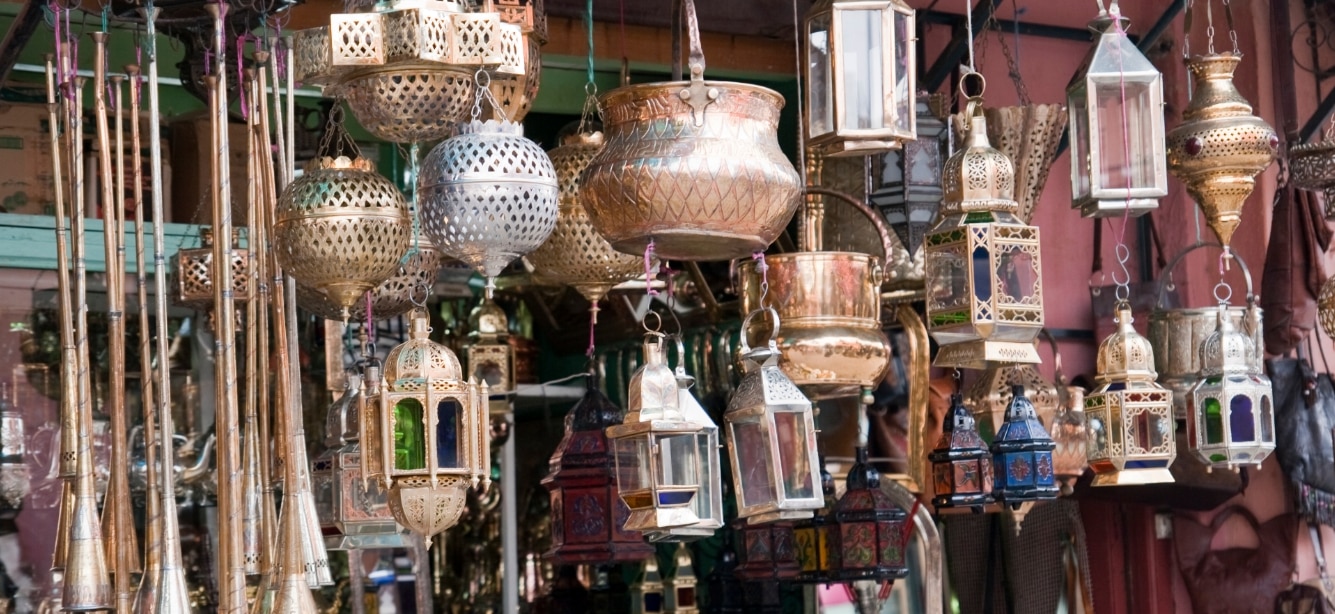
Metal crafts are all about the art of shaping, molding, and creating objects from metals. Referred to as metal crafting, it’s a skill that has been passed down through generations, and its techniques have evolved over millennia.
This craft can include activities such as forging, casting, welding, engraving, and forming, and it is often associated with specific subfields like jewelry making, blacksmithing, clockmaking, and more.
Metalcraft involves using specialized tools and techniques to shape, join, or decorate metal materials, resulting in a wide variety of products, from intricate jewelry to robust industrial components.
These specific crafts represent not just an artist’s vision but also the rich history, culture, and innovations of societies past and present.
What Are the Different Types of Metal Crafts?
The different types of metal crafts are as diverse as the metals they use. These crafts have been fine-tuned over the ages, each with its unique charm, history, and special technique. Here’s a quick breakdown of the most popular types of metal you can use for different types of metalwork.
Jewelry Making
This craft transforms metals into beautiful adornments to wear on the body. Think of the intricate gold necklace or that silver anklet that jingles with every step – that’s jewelry-making at its finest. You can make everything from rings or earrings, bracelets, necklaces, chains, pins, and more.
Blacksmithing
A skill of ancient origin, blacksmithing involves forging and shaping metal, usually iron or steel, using hammers and anvils. Every medieval movie needs a blacksmith, right?
Casting
Filling a mold with molten metal to get certain shapes is casting. From the cute metal figurines to the massive bronze statues, casting has its signature everywhere you look.
Clockmaking
Ticking away the passage of time, clockmaking is the art of creating timepieces. It’s not just about telling time; it’s about crafting history. It involves intricate and delicate handling of metal to fashion the tiny pieces that go into the workings of a clock.
Cloisonné
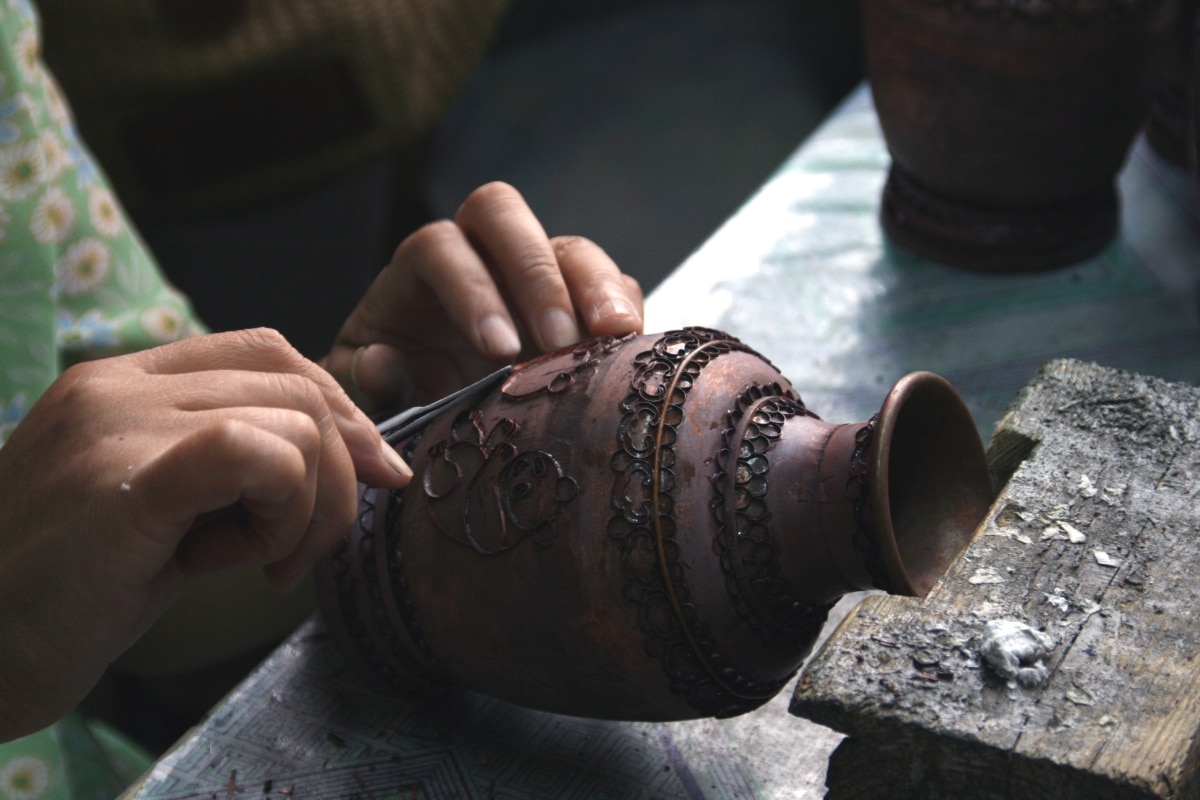
Cloisonné is a decorative art where enamel, glass, or gemstones are separated by thin metal wires to create vibrant designs. Think of it as coloring but for metals.
Coppersmith
As the name suggests, it’s all about crafting items from copper. From the vintage Moscow mule mugs to the shiny pennies, coppersmithing has been around for ages.
Enameling
Fusing powdered glass to metal surfaces at high temperatures, enameling produces colorful, decorative finishes. It’s like giving metals a colorful tattoo.
Farrier
Horse enthusiasts take note! A farrier crafts and fits horseshoes. It’s like a pedicure for horses but with more iron. Yes, it’s a rather specific metal craft, but someone’s gotta do it!
Knifemaking
The art of creating knives, from the humble kitchen knife to the ornate ceremonial daggers. Knifemaking is about blending beauty with functionality. You could essentially craft a knife from any metal, but knowing which ones work best and why is the key.
Locksmithing
Crafting locks and keys, locksmithing is the subtle art of keeping secrets safe and doors securely locked. It’s another intricate skill, much like clockmaking.
Metalworking – metalsmith
This is the general art of working with metals as a whole. If metal crafting was a family, metalsmithing would be the wise old grandparent.
Pewter
Crafting with pewter, a malleable metal alloy, results in everything from ornate goblets to decorative figurines.
Metal wire art
Bending and shaping metal wires to create sculptures or decorative items. It’s like drawing, but in 3D and with metal. Crafters have even turned to creating beautiful jewelry using metal wires.
Silversmith
This is the art of crafting objects out of silver. Silversmithing produces those shiny treasures that we adore, from jewelry to ornate mirrors.
Tinware – tinsmith
From vintage tin cups to ornamental boxes, tinsmithing deals with crafting objects from tin. It’s a soft and malleable metal not meant for heavy-duty items.
Watchmaking
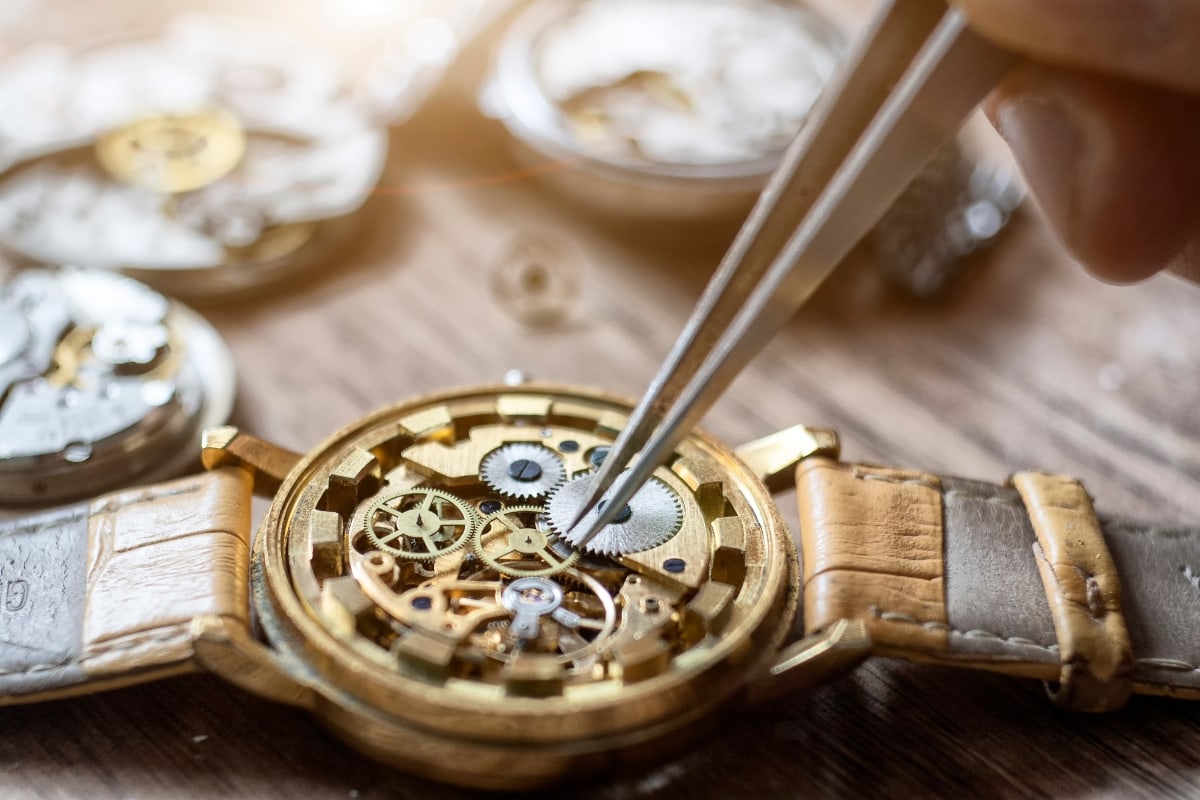
Beyond just time-telling, watchmaking is about creating intricate, precise, and luxurious timepieces. It’s crafting time, quite literally. This one goes hand-in-hand with clockmaking.
Weaponsmith – sword making, armorer, gunsmith, fletching
The fierce art of creating weapons – swords, armor, guns, and even arrows. Every hero, from tales of yore to modern stories, owes a bit to the weaponsmith. A weaponsmith has a vast knowledge base of the different metals available and how they work when applied to weaponry.
What Are the Different Tools Used for Metal Crafts?
The tools used for metal crafts are both diverse and specialized. Like a painter needs brushes of different sizes and textures, a metal artist requires a range of tools to bring their vision to life. Below is an overview of some of the most fundamental metal craft tools and their main functions.
Hammers
Ah, the humble hammer. Used to strike and shape metals, they come in a ton of different weights and designs tailored for different metalworking tasks and materials. The Estwing – MRF4OBS Sure Strike Blacksmith’s Hammer is a great option to look at.
Anvils
These heavy blocks provide a surface for smithing and forging. If the hammer is a conductor, then the anvil is the stage. There are tons to choose from, depending on what kind of metal craft you’re doing, but the Happybuy Single Horn Anvil is pretty popular.
Tongs
Metal gets hot. Very hot. Tongs help hold, move, and twist these heated metal pieces safely so you don’t get burned. The BetterForge Blacksmith Tongs Set gives you two different sizes to work with.
Chisels
These are used for cutting and carving metals. Chisels are like the sculptor’s chisel but sturdier and for metals. The KENDO 3-Pieces Heavy Duty All Purpose Cold Chisel Set is a great place to start, especially for large items.
Files
Shave down rough edges and achieve the desired shape with the help of metal files. The Libraton 31PCs Metal File Set has everything you need and more.
Shears
These are scissors but on steroids. Used for cutting large sheets of metal into smaller, more workable pieces, shears are a key tool in any metalworker’s kit. The COMOWARE 3 Pack Aviation Tin Snips comes with three different sizes and tips.
Saws
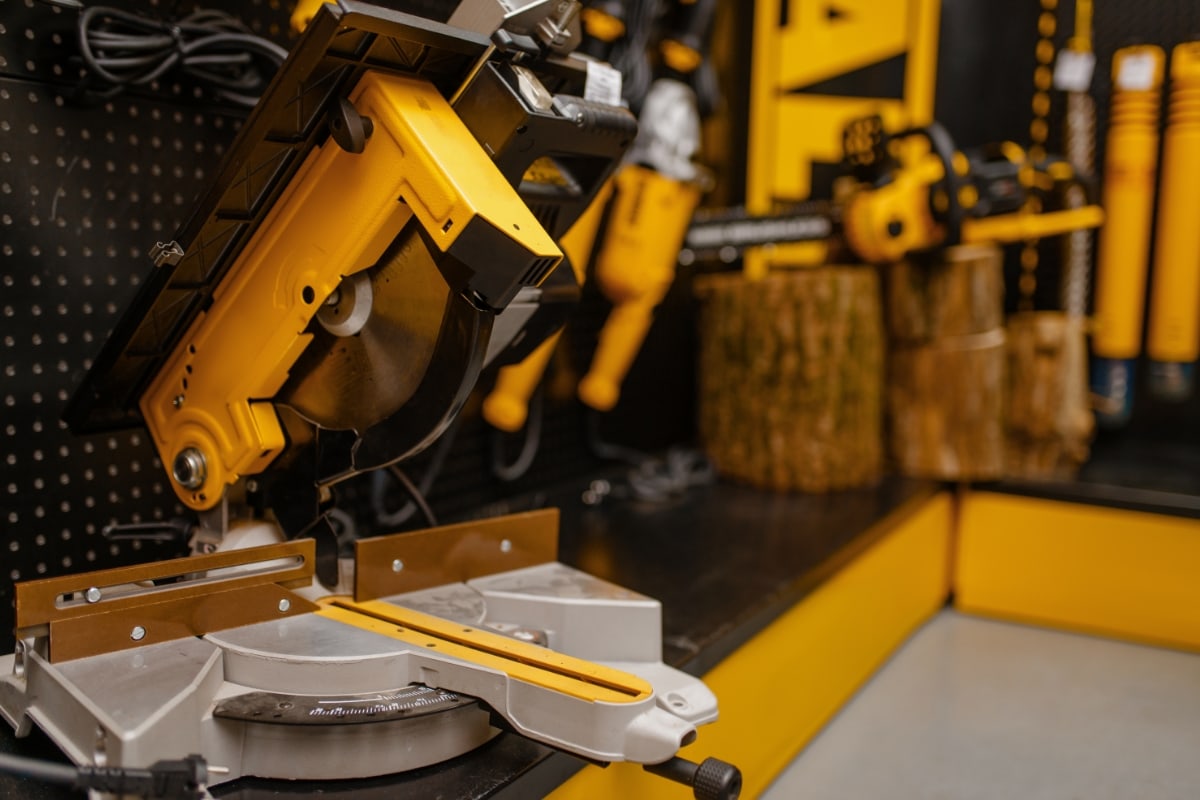
From hand saws to powered ones, saws for metalworking help cut metals with precision and ease. Try the King Showden Mini Circular Saw Set for larger items and the KATA 10 Inch Aluminum Frame Compact Hand Operate Mini Hack Saw for finer projects.
Vices
These tools hold your workpiece steady with a tight grip because you don’t want that hot piece of metal flying off when you’re trying to fuse it with something. This 3-inch Swivel Universal Table Vise can help you out with a ton of different metal crafts.
Welding Equipment
To join metals together, you’d need some sort of welding equipment. It’s like the glue gun of the metal world but way hotter. The YESWELDER 135Amp MIG Welder is a great starter unit for small jobs like metal crafting.
Grinders and Sanders
These are for refining the surface and edges of your metal pieces. Grinders and sanders are your best pals to smooth out rough cuts or blemishes. The POPULO 8V Rechargeable Cordless Rotary Tool is a great multi-purpose tool for small, finer projects. But for large metal projects, try the NunDunco Mini Belt Sander.
Drill Press
Need holes in your metal? Enter the drill press, ensuring precision and consistency. There are tons to choose from, like the WEN 4208T 2.3-Amp 8-Inch 5-Speed Cast Iron Benchtop Drill Press. But you should opt for something like the Electric Corded Hand Drill Kit for finer projects like jewelry making.
Bench Blocks
You need a smooth surface to hammer, rivet, and shape metals. Bench blocks can help with that as they provide you with a surface specially designed for working with metals. Start with the OWDEN Professional Steel Bench Block.
Mallets
Softer than hammers, mallets made of rubber or wood can shape metals without leaving marks. If you’re just getting into metal crafting, definitely get yourself a rubber mallet.
Pliers
Use these for bending, holding, and twisting wires and thin metal pieces instead of attempting to do it by hand. The Shynek Jewelry Pliers come with three different types to use, depending on what you’re making, but there are larger pliers available for more heavy-duty metal works.
Soldering Iron
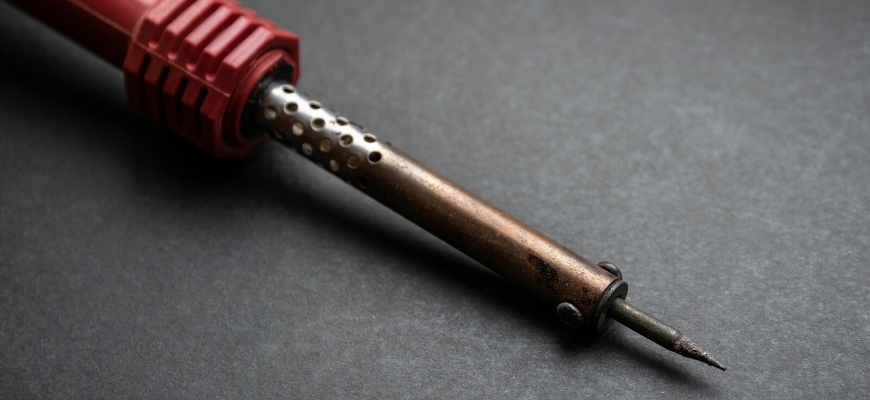
A soldering iron is a tool used to join metal pieces by melting solder, so a soldering kit is a must-have for jewelry makers. This tool has a bit of a learning curve, though. Be sure to practice on some scrap pieces first.
Torch
If you’re getting into any kind of metalworking, you’ll need this. Torches provide the heat required to melt, solder, and anneal metals.
Calipers
You can use calipers for those times when measurements need to be so exact that a simple ruler just won’t do. They look like a weird pair of tongs but with curved, pointy tips that can take extremely accurate readings and measurements that a ruler might not be able to help with.
Rulers and Squares
Use rulers and squares to measure and ensure straight lines. Metals might be malleable, but precision is key to getting the end result you want.
Safety Gear
Always put safety first! Here are some must-have safety gear for metalworking:
Metalworking Machinery
Yes, hand tools are important and have their place in metalworking, but some heavy-duty tasks require machinery. Here are some examples of what to look for:
- Lathe: For rotating a workpiece. Kind of like a lazy Susan.
- Milling machines: To remove material from workpieces.
- CNC machines: Computer-controlled cutting and shaping to get clean, exact cuts.
- Press brakes: For bending metal sheets.
- Shearing machines: To cut large metal sheets.
What Materials Are Commonly Used in Metal Crafting?
Materials commonly used for metal crafting form the backbone of every creation, providing strength, beauty, and unique characteristics to every piece you make. Understanding each metal’s properties and what they’re best for is so important when choosing the right material for a project. So, here’s a list of some of the best metal craft supplies.
Steel
Made of iron and carbon, steel is known for its strength and versatility. It’s used in everything from architectural structures to ornamental designs.
Aluminum
Metal crafters favor the lightweight, malleable, and corrosion-resistant aluminum for its silver-like finish. It’s often used in modern design pieces and jewelry.
Copper
This reddish-brown metal is known for its excellent conductivity and is commonly used in decorative items, electrical wiring, dishware, jewelry, and even cookware.
Brass
This is a combination of copper and zinc. Brass has a golden shine similar to gold and is utilized in decorative pieces, musical instruments, and various fixtures.
Bronze
An alloy of copper and tin, bronze boasts a long history of use in sculptures, medals, and coins. They don’t call it the Bronze Age for nothing!
Silver
Prized for its lustrous finish, silver is a favorite in jewelry making and various artworks. It’s hypoallergenic and falls on the more affordable side of metals available for jewelry making.
Gold

It’s renowned for its beauty and value. Gold has been used for millennia in jewelry, coins, and various decorative items.
Tin
This soft, silver-colored metal is mainly used to make coatings, like in tin cans, to prevent corrosion. But metal crafters have been manipulating tin for a series of different crafts (like home décor) in recent years.
Pewter
It’s considered a malleable metal alloy. Pewter has been used historically for making decorative objects and tableware.
Lead
Known for its density and softness, lead is mostly used in batteries, radiation shields, and occasionally in sculptures. It’s not a common material for much else.
Nickel
Resistant to corrosion and showing off a silvery-white shine, nickel is used in the making of coins, batteries, and tons of stainless steel products. Avoid using it for jewelry making, as it tends to turn the skin a greenish tinge.
Iron
One of the oldest metals known to humanity, iron is strong and is a primary component in steel production. Crafters use it to make things like iron spindles, sculptures, signs, and more.
Stainless Steel
An alloy of iron, chromium, and other elements, stainless steel is rust-resistant and is mostly used in crafting kitchenware, jewelry, and sculptures.
Titanium
With high strength and low density, titanium is corrosion-resistant and used to make aircraft, prosthetics, and jewelry.
Zinc
It’s mostly used as a protective coating for other metals, so zinc also has applications in batteries, different alloys, jewelry, toys, and more.
Platinum
Crafters love platinum because it’s dense, malleable, and highly unreactive. Platinum is prized in jewelry and industrial applications.
Exotic Metals
These are rare metals that you won’t find in everyday metal crafts but have specific niche applications because of their unique properties.
Tungsten
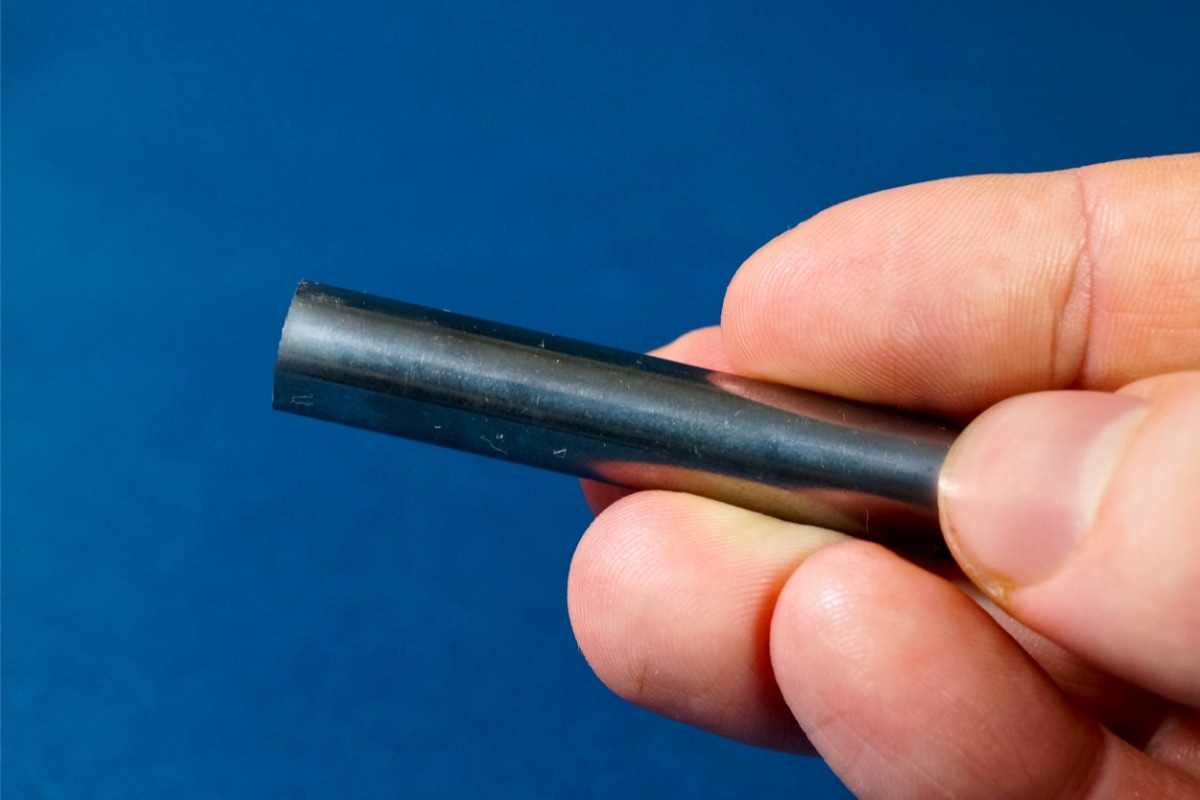
With the highest melting point of all pure metals, tungsten is used to make different electronics, aerospace equipment, and even jewelry. Some men prefer jewelry and accessories made of tungsten because it’s so durable.
Tantalum
Highly corrosion-resistant, tantalum is a marvel in terms of metals. Because it ensures longevity, you can find it used in electronic components and surgical implants. Crafters love its unique sheen and robustness, making it a candidate for specialty jewelry.
Niobium
Often found in alloys, niobium has applications in jet engines and superconducting magnets. Also, its vibrant, natural colors when it’s anodized make it a favorite for artisan jewelry.
Noble Metals
Unlike most base metals, these metals are resistant to corrosion and oxidation in moist air. Make crafted items like jewelry, coins, and decorative pieces that retain their luster and integrity for years.
Ruthenium
With its steadfast refusal to tarnish, ruthenium is a crafter’s dream to make things like jewelry, pin nibs, and more. Also, its ability to alloy with other precious metals enhances its hardness and wear resistance.
Rhodium
Famed for its reflective properties, it’s used in mirrors, searchlights, and some jewelry as plating. It’s a hypoallergenic metal, so you’ll find rhodium-plated jewelry more and more these days.
Palladium
You might find this metal used in jewelry, watchmaking, and certain industrial applications because of its resistance to corrosion.
Osmium
With a bluish-silver color, osmium is used in pen nibs, electrical contacts, and other applications where hardness is required.
Iridium
This is probably one of the densest metals. People use iridium to craft things like spark plugs, fountain pen tips, and more.
What Are the Benefits of Learning Metal Crafts?
The benefits of learning metal crafts are vast and will depend on what you hope to get out of it and also what you put into it. Enrich your life with a new hobby or hone a skill you want to make a career; the options are endless. But here’s a quick overview of the different benefits you can expect to find with learning to work with metal.
Practical Skills
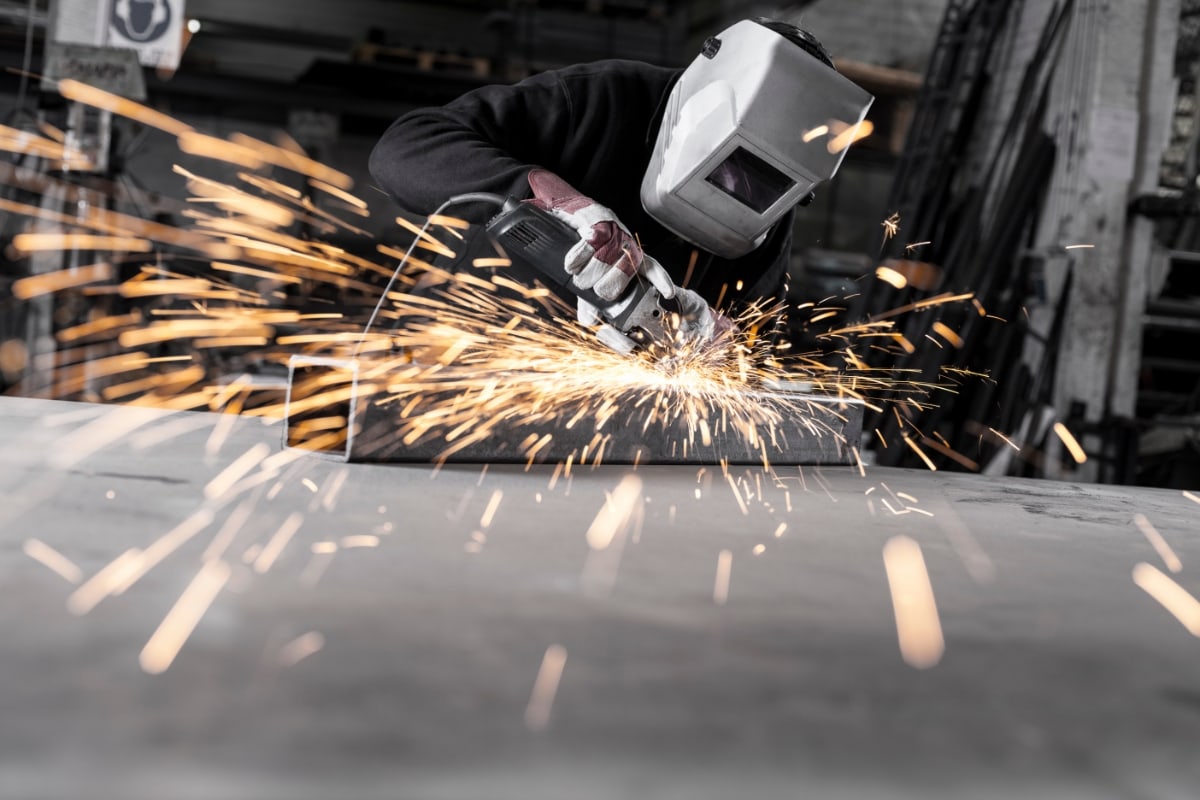
Getting into metal crafts equips you with some pretty awesome hands-on skills. From welding to sculpting and even intricate clockmaking, the techniques you perfect can be applied in tons of day-to-day scenarios, turning you into a DIY pro!
Problem-Solving
Just like anything in life, crafting with metal isn’t always smooth sailing and isn’t always straightforward. It comes with its challenges, from design flaws to materials not behaving. Learning how to deal with these hurdles enhances your problem-solving abilities, teaching you to approach obstacles with a can-do-will-do mindset.
Creativity
Metal crafting is like painting mixed with sculpting but on a 3D metal canvas. Lean into your imaginative expression and see what unique creations you can bring into the world. As you mold and shape metals, you also carve out a creative niche for yourself.
Confidence and Self-esteem
A different kind of satisfaction comes from turning raw materials into unique, hand-crafted masterpieces. Each project you complete only amplifies your confidence and boosts your self-esteem, solidifying the belief that you can achieve whatever you want if you just have the patience to learn and perfect it.
Career Opportunities
The world of metal crafts isn’t just about hobbies. It opens doors to loads of different career paths. Become a jeweler, a blacksmith, or even a sign maker. The skills you acquire could be the stepping stones to a very fulfilling profession.
Practical Repairs
Broken gate? Loose railing? You could call a professional, but with metal crafting skills under your belt, little repairs around the house can become tasks you simply handle without always needing expensive professional help. It’s empowering and economical! Wahoo!
How Can I Begin Metal Crafting?
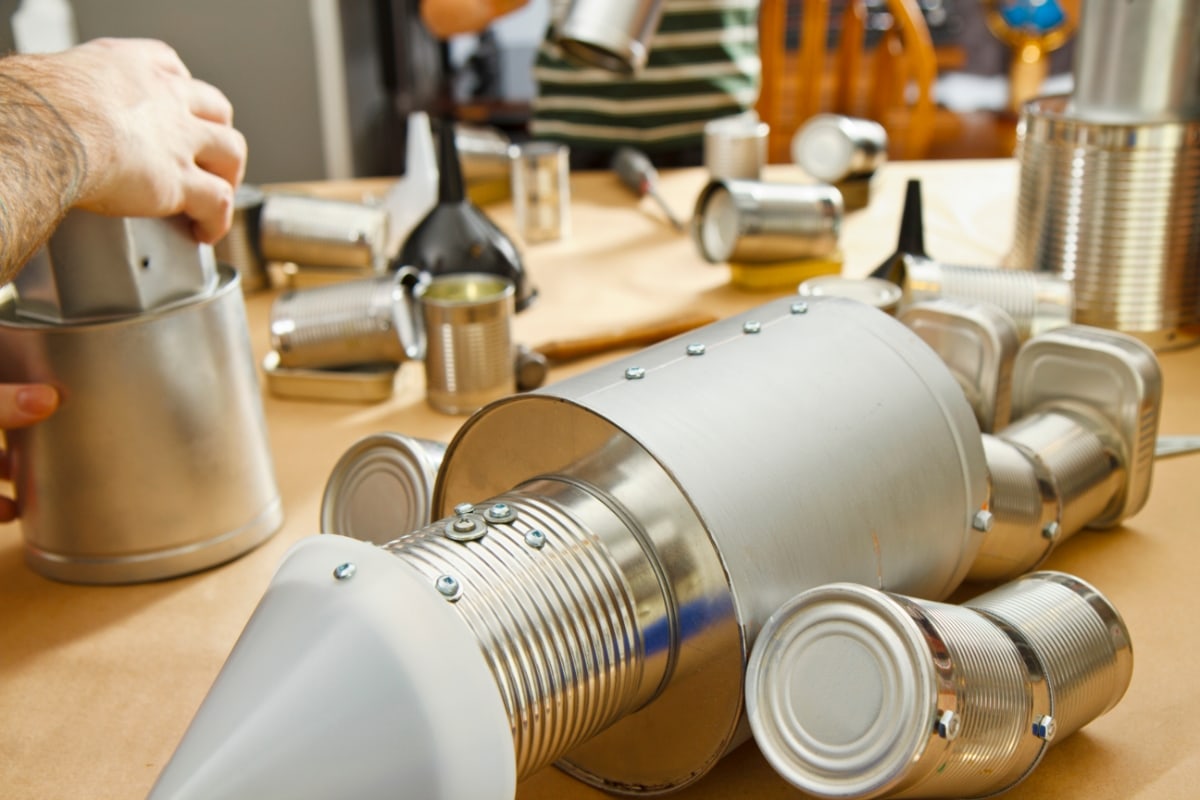
To begin metal crafting, you should approach the craft with a plan. Don’t just jump right in; it’s not an easy, straightforward craft to pick up. Here are a few pro tips to get you started.
Research and Education
Before diving in feet first, invest some time in learning and understanding the basics of metal crafting. Books, online articles, and video tutorials can give you a solid foundation and introduce you to the intricacies of the craft. Lucky for you, our site has a plethora of knowledge for you to sink your teeth into.
Choose Your Focus
As I mentioned above, metal crafting is vast. It’s not as simple as something like knitting because it has so many niches to master. You need to decide whether you’re drawn to the intricacies of jewelry making, laborious blacksmithing, etc., and start there. Once you figure that out, you can determine the tools and materials you’ll need to get started.
Gather Tools and Materials
After you pick a metal niche to zero in on, start collecting the basic tools and materials you’ll need. Remember, you don’t need everything at once. Start with the essentials and grow your toolkit with your skills.
Prioritize Safety
Metal crafting is dangerous because it involves working with hot metals and sharp tools. Always prioritize your safety with safety gear like goggles, gloves, and aprons. Also, never operate your metalworking tools around flammable things, and try to work in a well-ventilated area.
Practice Basic Techniques
Before you start working on actual projects, practice the foundational techniques on scraps and spare materials so you get a feel of how it’s done. It’s always better to mess up during practice than in the middle of a project.
- Casting: Melting and molding metals into desired shapes.
- Chip Carving: Removing small “chips” from the metal surface to create designs.
- Engraving: Carving designs onto a metal surface.
- Filigree: Creating intricate designs with fine metal wires.
- Gilding: Applying thin gold leaves or powder to solid surfaces.
- Stamping: Using hardened steel stamps to imprint designs onto metals.
- Studs: Adding decorative metal pieces to a surface.
- Turning: Shaping metal using a lathe.
Take Courses or Workshops
Sure, everyone’s a self-starter and DIYer at heart, and self-learning is definitely valuable. But heading to a workshop or taking a few simple courses can give you hands-on experience under expert guidance. These can help refine your techniques and introduce you to industry tips and tricks that you may not have ever learned otherwise.
Start with Small Projects
Starting small will help you to understand the medium without feeling overwhelmed. A simple project, like crafting a keychain, will give you that awesome sense of accomplishment so you can tell yourself, “Hey, maybe I can do this!”
Simple Keychain Crafting Guide
- Material Selection: Start with a soft metal like aluminum or copper. Think of it as the fluffy pancakes of the metal world – easier to shape and oh-so-satisfying! These are the perfect starter metals.
- Design: Grab a paper and sketch out your design. It could be your initials, a cute heart, or even a doodle of your cat. Remember, creativity has no bounds (or rules)!
- Transfer: Using your trusty pencil (or charcoal if you feel fancy), gently transfer that masterpiece onto your metal canvas. It’s a bit like tracing your hand on paper but cooler.
- Cutting: Now, whip out those shears – it’s showtime! Safely cut the metal following the outline of your design. And remember, it’s just like cutting paper, but, you know, metal-ier, so the edges are much sharper.
- Engraving: Grab that engraving tool (or, as I like to call it, the magic wand). Gently but confidently, trace over your design. This will give your keychain that professional touch and add depth.
- Polishing: Smooth out the edges with a sanding tool. This whisks away any bits that can cut you or snag on clothing.
- Hole Punching: Time to punch a small hole at the top. This isn’t just any hole; it should be wide enough to slip through a keyring.
- Assemble: Slide a keyring through that hole, and there you have it! A brand-new, shiny, made-by-you keychain. Stand back and marvel at your work!
Follow these basic steps and practice regularly. Like any art form, patience, practice, and passion are your best allies.
FAQs
Here are some quick answers to common questions that arise with learning metal crafting.
What Are the Best Practices for Safety in Metal Crafting?
If you’re working with metal, always wear your safety gear, like goggles for your eyes, gloves for your hands and arms, and special aprons to protect your clothing and body. Also, keep your work area clean and organized.
Can I Start Metal Crafting as a Hobby Without Prior Experience?
Of course! Everyone starts somewhere, right? With your metal crafting tools and a bit of patience, you can start metal crafting without any experience. Just start small and work your way up to more difficult crafts as you go.
Are There Any Age Restrictions for Learning Metal Crafting?
No, there are no age restrictions for learning to work with metal, but it can definitely be dangerous for kids. So, always practice safety and caution and teach them to do the same.
What Are the Potential Career Opportunities in Metal Crafts?
By learning to work with metals, you could make jewelry, become a blacksmith, or even sell cool metal sculptures. The options really are as endless as your imagination.
Can I Sell My Metal Craft Creations Online?
You bet! Easy-to-use platforms like Etsy and eBay are awesome for displaying your work and selling your projects. When buyers are looking for a handcrafted item, those are the first two sites they go to.
Is Metal Crafting a Suitable Activity for Children?
Metal crafting can be a really dangerous hobby because it deals with open flames, molten metals, and sharp edges. So always practice safety and never leave them unattended. Start with a simple metal craft like wirework.
Are There Any Specific Certifications or Courses That Can Help Me Become a Professional Metal Crafter?
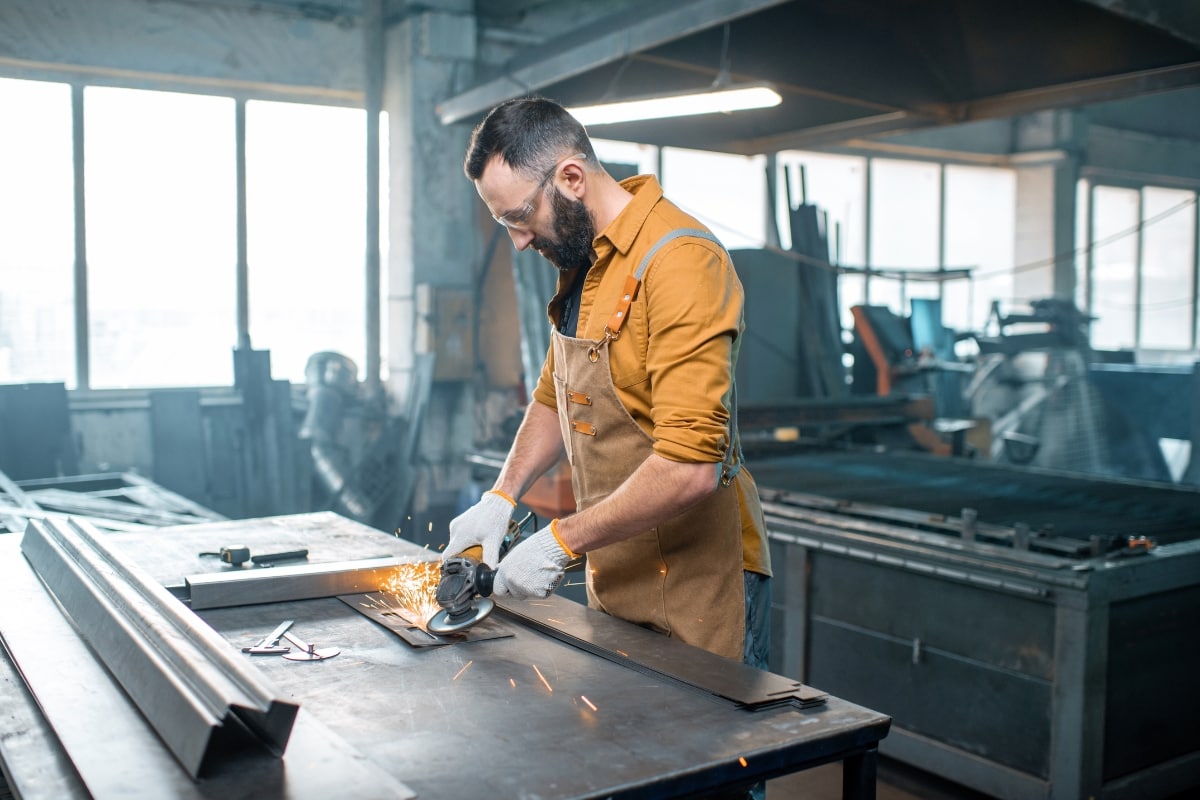
Yes, tons of community colleges and institutions offer courses and certifications you can work toward to help boost your credibility as a metal crafter. There are even online learning options.
Are There Any Cultural or Regional Variations in Metal Crafting Techniques and Styles?
Like any craft or medium, techniques and even materials can differ from culture to culture depending on where they live and what’s available to them.
Can I Combine Metal Crafting with Other Craft Forms?
Of course! You can combine metals with different materials like woods, ceramics, glass, and more. These combinations can produce objects like home decor, accessories, and even functional items for building.
Get Started on Your First Metal Crafting Project!
Metal crafting is an age-old art form that combines the robustness of metal with the delicacy of design. It involves creating intricate jewelry pieces and forging sturdy tools, but the possibilities in metal crafting are endless.
Now you know that the world of metal crafts can provide not only a creative outlet but also practical skills, potential career opportunities, and an enriched sense of accomplishment. Whether you’re looking to start a new hobby, embark on a career, or simply appreciate the art, anyone can master metal crafting!


